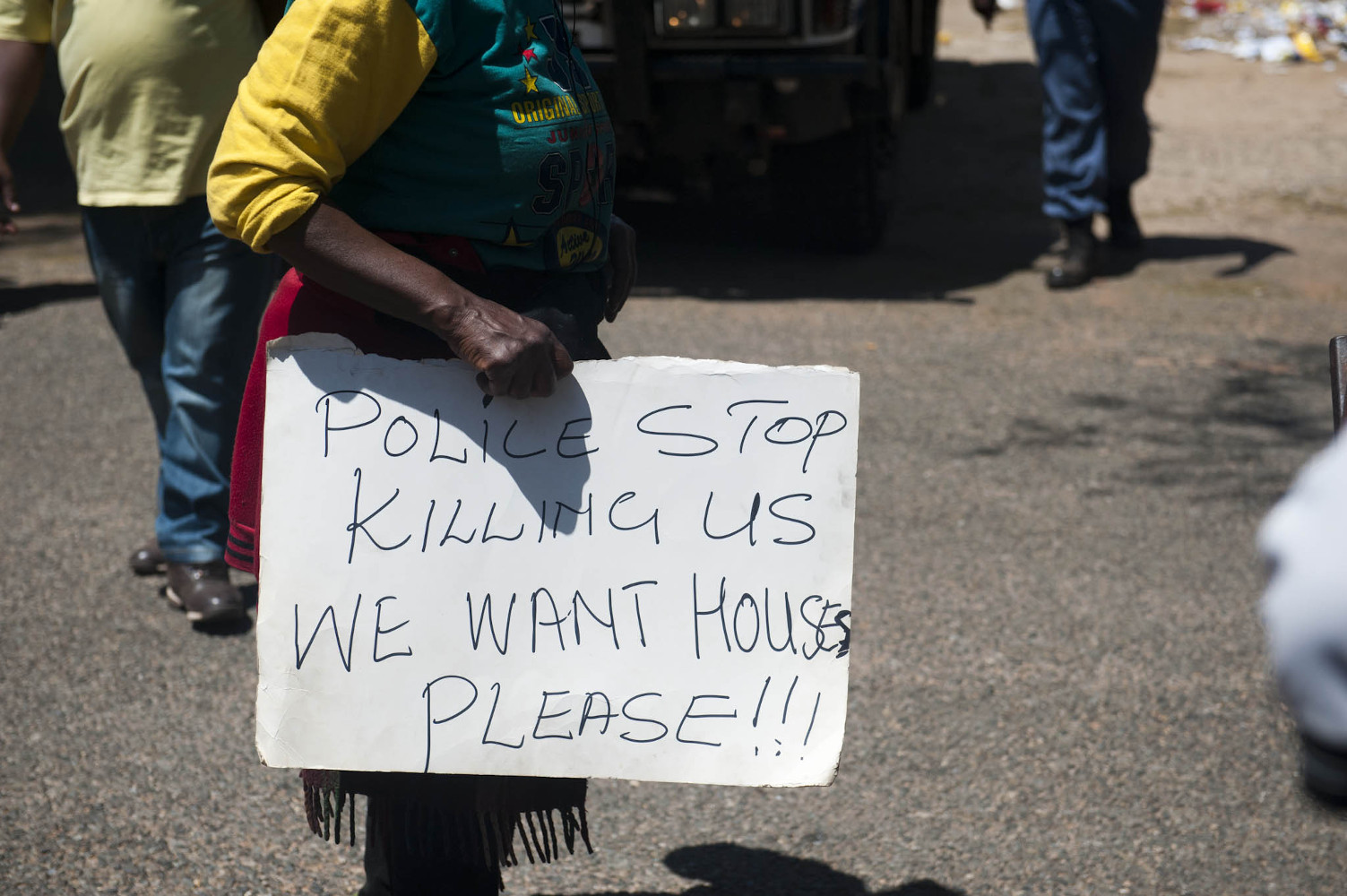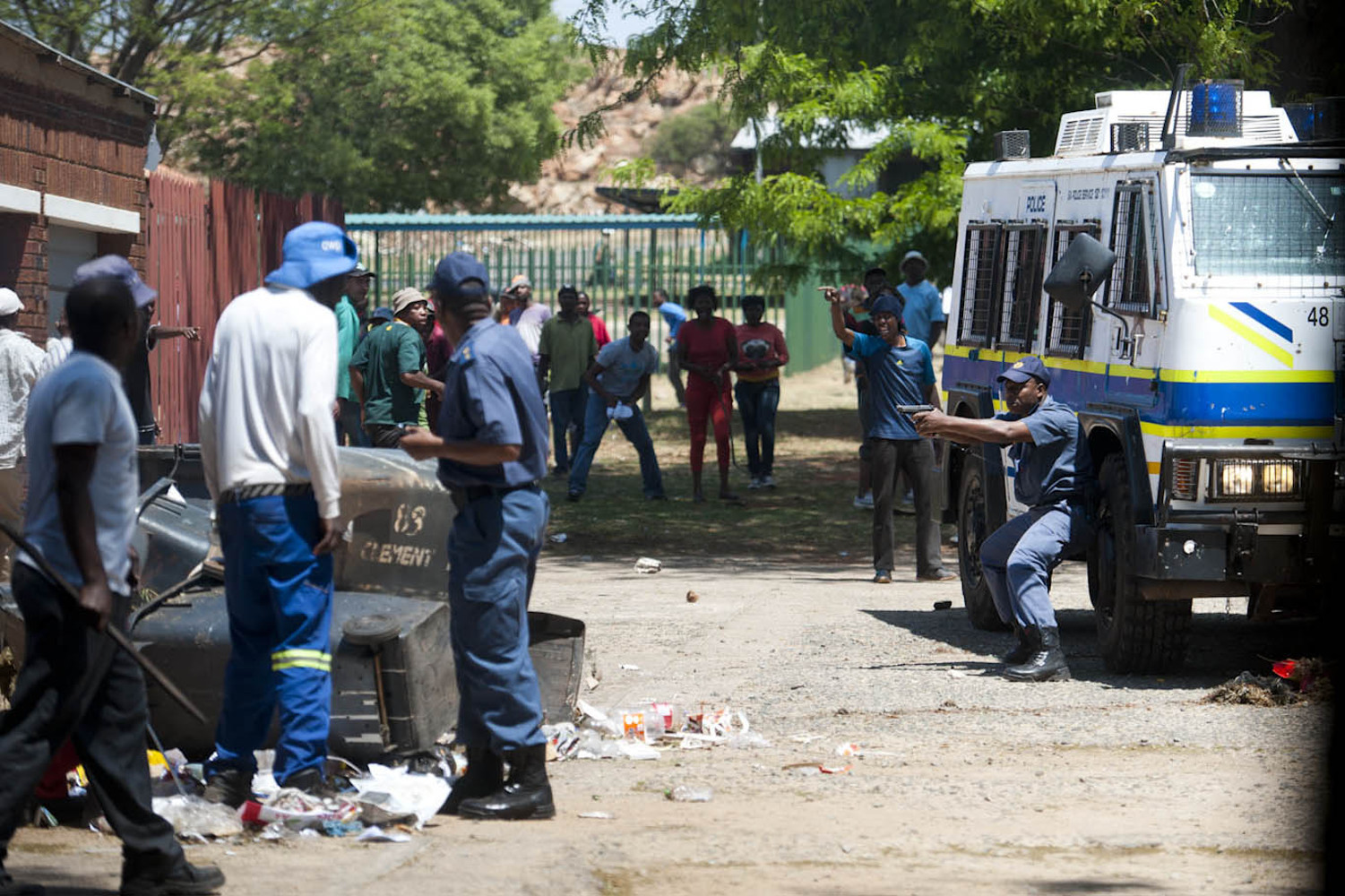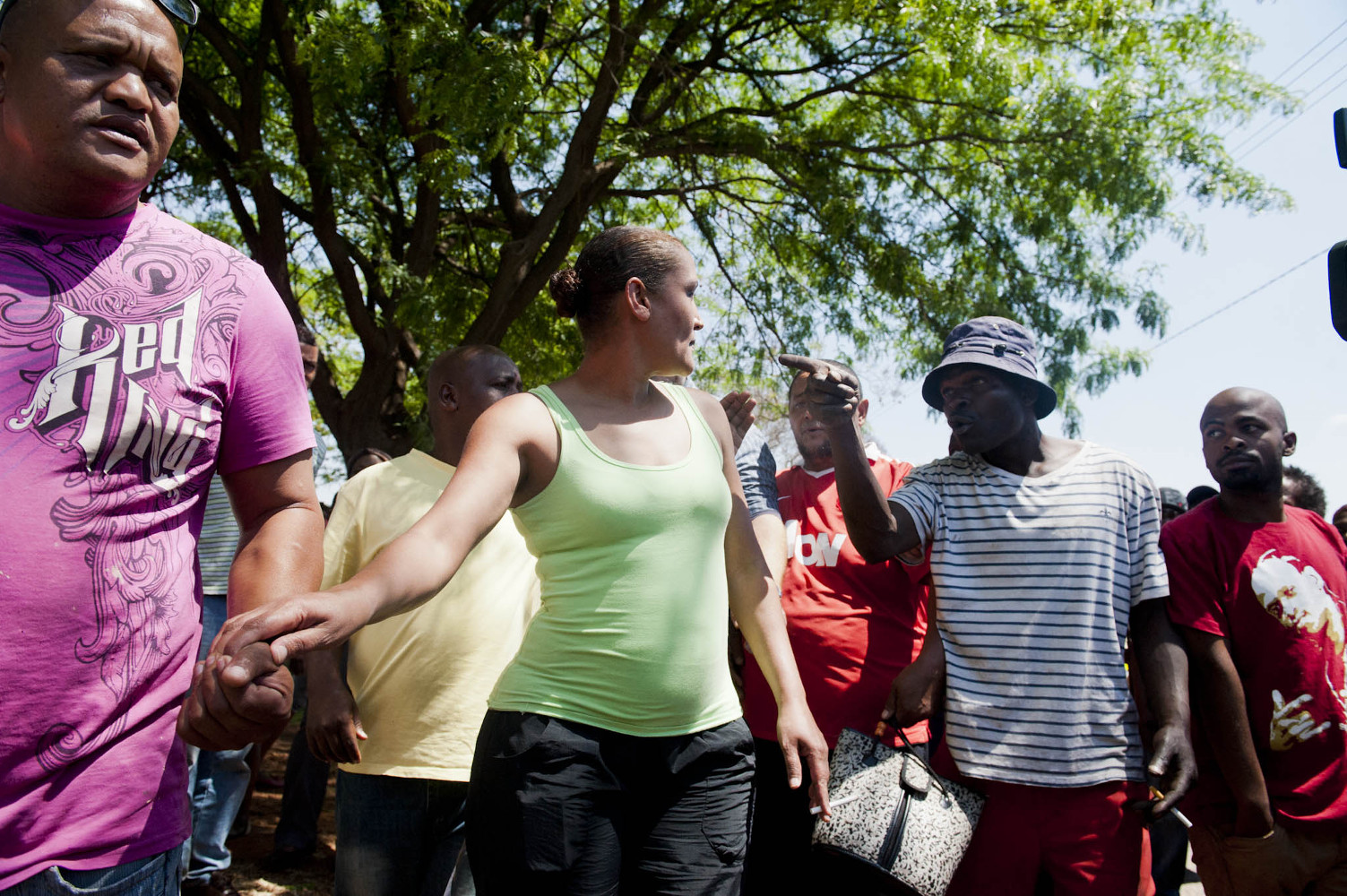The Nyala is still king
In the early hours of Monday morning a few hundred protesters from Kathrada Park blockaded the road outside the Newclare train station – which services the community just west of Johannesburg. Through placards and chants, they demanded houses that had been promised them since 2002. Things escalated and the green palisade fences of the station were torn down, before it was torched. A security guard opened fire, killing one member of the crowd.
The main streets of Newclare were then barricaded with chunks of rubble and large tree-stems. This stopped traffic, forcing it to flow down the side roads. Only the largest police vehicles could knock their way through.

A protester holds up a placard expressing the groups anger because of their long wait for promised houses. (Delwyn Verasamy, M&G)
“We want our houses. They were promised so many years ago and we have nothing,” said one member of the crowd. While a few dozen in the centre danced and provided the energy, the majority hung around on the periphery. “We are living in shacks.” In a calm voice, he spoke slowly to ensure his thoughts were recorded. “You know what happens when we have a fire in shacks? People die.”
Smoke and flames
Led by the vocal core – many of whom were swigging liquid from glass beer bottles – the crowd moved through the wide suburb roads to a local municipal building. Here, mothers fled with their children clutched tight before the advancing crowd. People in the neighbouring houses rolled gates closed, snapping the locks. A solitary police Nyala attempted to stop progress. Other police cars parked under the shade of big acacia trees, the officers keeping their weapons locked in their boots.
An older man, waiting for the crowd, chuckled. “That place is a fortress.” A three-metre tall palisade fence had barred protesters for years before. “Always when there are problems the people come here and try burn it down. They never succeed.”
When the crowd arrived it was with a wave of sound. The gate was surrounded. Black dustbins, piled outside the municipal building’s gate, were set alight. This formed a focal point for the crowd, its energy rising as the flames flicked into the hot midday sky. But before the crowd could test the gates, a Nyala rammed its way into the centre. This burst its energy.

A police officer points his gun at protesters after they surround the Nyala. (Delwyn Verasamy, M&G)
It then refocused on the Nyala. The two officers used its squat presence to back them up as they walked around the crowd. Their colleagues looked from the periphery. Suddenly the energy levels of the crowd shot up, as the officers tried to stop them smashing the gate. One officer was forced to turn his back to the Nyala, using it as a shield and pointing his gun at the seething crowd. Blue and black smoke coughed out of its exhausts, as the diesel engine burst into life.
Holding thick sticks, some members of the crowd clambered onto the Nyala. They beat its sides, the hollow, metallic noise ringing across the singing. A second Nyala then arrived, pushing aside the crowd, dissipating it. The less hardy protesters scattered as they did so many times on Monday at the sight of a Nyala. Officers, dismounting the armoured truck, pushed into the crowd with their shotguns and cowed it into relative silence.
Housing is a provincial problem
“Policing is harder since Marikana because you can use so few of your tools in a situation like this,” said one officer. The Nyala becomes the only way to show force. Through its sheer size it can go into the centre of crowds and force them to break up. This breaks their momentum, they said.
With one boiling point gone, the area’s ward councillor arrived. Susan Stewart stood with a small group of police, while the crowd moved to surround her. The crowd refused her explanation that a lack of housing is a provincial problem, and she was doing her best to get the province to deliver on houses that were promised in 2002.
As the argument grew in intensity, the more wary began leaving the circle. Police then guided Stewart away, but the crowd cornered her near the large gate of a house 400-metres from the now-silent Nyalas. With things spiralling out of control, their diesel engines roared into life again. One pushed into the crowd again, before Stewart was rushed inside.

An angry protester points a finger at Susan Stewart, the area’s ward councillor, unwilling to accept her explanation for the delay in houses. (Delwyn Verasamy, M&G)
Rubber bullets and the sudden and sharp explosion of a stun grenade quickly dissipated the crowd. The smaller police vehicles then raced down side streets – followed by cars full of journalists – to find ringleaders of the day’s violent protests. The Nyalas took to the blocked roads, their thick tyres breaking apart the barriers installed by protesters.
The police’s spokesperson, Warrant Officer Jerbes de Bruyn, said a case docket for murder had been opened agains the security guard who had killed the member of the crowd in the morning. He said the police had arrested several people, and would now wait for further developments.
The Nyala is still king, but now it no longer has the power to cower protesters on its own.